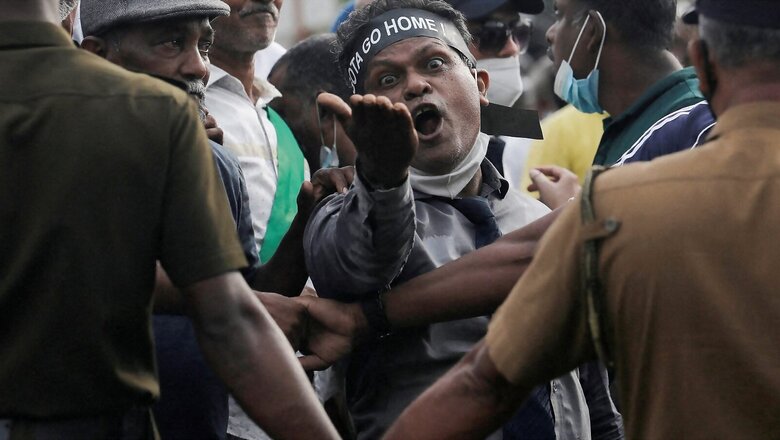
views
Sri Lanka faces an economic crisis due to a critical shortfall of foreign currency that has led to severe political and social problems in the island nation. Troops stationed at fuel stations to prevent crowds going unruly while some newspapers running out of newsprint are only the tip of the iceberg.
News agencies reported that earlier this month a motorist was murdered over a squabble regarding his place in a long queue at a fuel station in Colombo. Meanwhile, food and fertiliser importers are unable to finance imports due to the shortfall of foreign currency.
There is a school of thought which points the finger at Sri Lanka’s dependence on China for falling into its ‘debt trap’, experts also point out that Sri Lanka’s lack of economic reforms has also led to the crisis. Writing for the magazine, the Diplomat, Umesh Moramudali says that without owing China billions in loans, Sri Lanka still would have found itself in the position that it finds itself currently.
The economic researcher in a separate article points out that Sri Lanka’s export performance along with its inability to move away from traditional exports like textiles, garments, tea and rubber were also partly responsible for the debt crisis. He also writes that the majority of Sri Lanka’s foreign debt was from international sovereign bonds(ISBs), accounting for 39% of the total foreign debt as of 2017. He also says that Sri Lanka could seek help from the International Monetary Fund (IMF) – who usually are the ones who help fight such situations – but Sri Lanka is dogged in its determination not to follow the reforms an IMF program suggests.
The leasing of the Hambantota port to China for 99 years was what the government felt it could do to raise foreign currency. The researcher also pointed out that the government was informed of the Hambantota port and its economic unsustainability. Despite knowing that the government went ahead with its plans without realising that the nation faced a sovereign debt default which Chinese banks cannot bail it out from.
China entered into a bilateral currency swap agreement with Sri Lanka in 2020 allowing 10 billion RMB (yuan) ($1.5 billion) but it was solely for bilateral trade along with other purposes for three years. Unlike India, which provided US dollars to Sri Lanka to address problems arising from dollar liquidity, the swap in yuan meant that Sri Lanka could not use the $1.5 billion it raised from China to pay off its ISBs.
Sri Lanka however continues to borrow from China. According to Sri Lanka-based news agency, the Daily Mirror, Sri Lanka will borrow $1 billion from China to pay off Chinese banks. Sri Lankan president Gotabaya Rajapaksa is also depending on China for fending off Sri Lanka’s food-related woes as China sent 2000 tonnes of rice to help mitigate the food crisis developing parallely.
Read the Latest News and Breaking News here
















Comments
0 comment